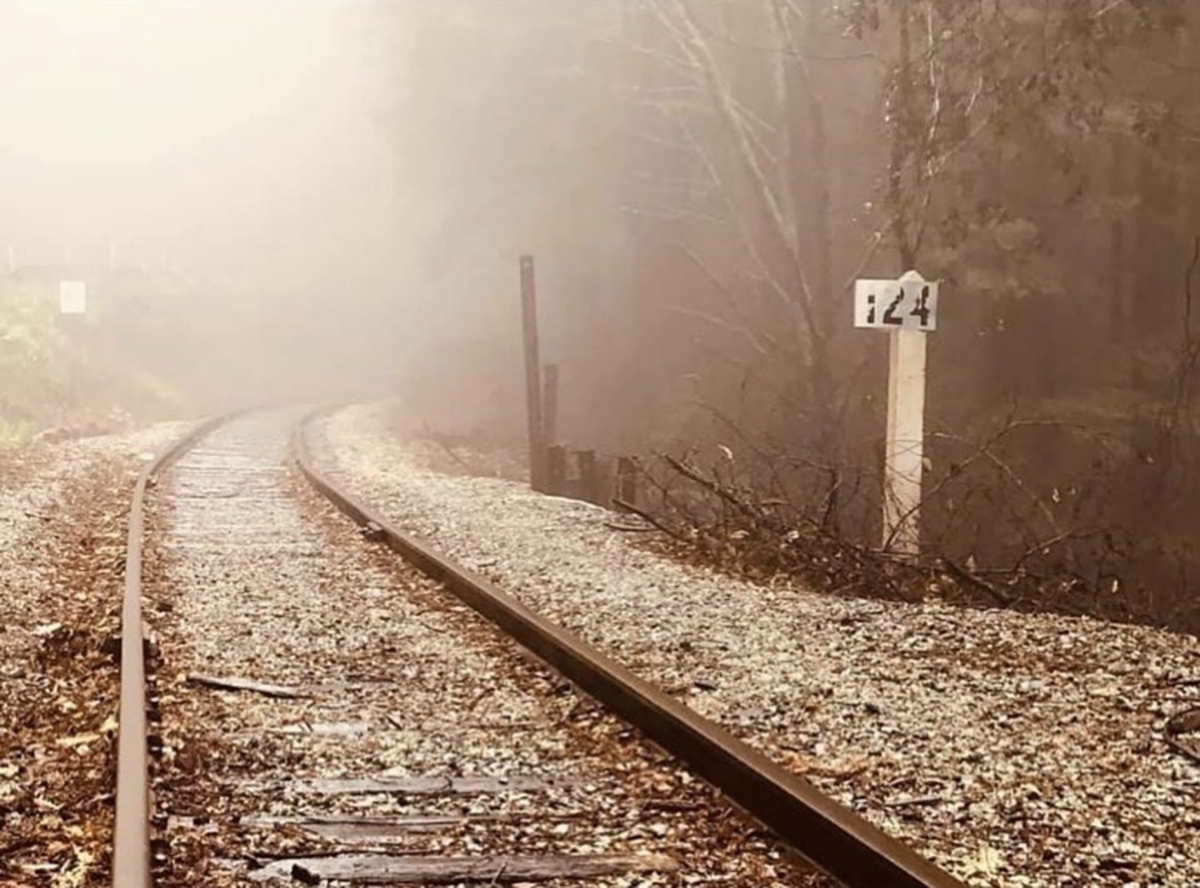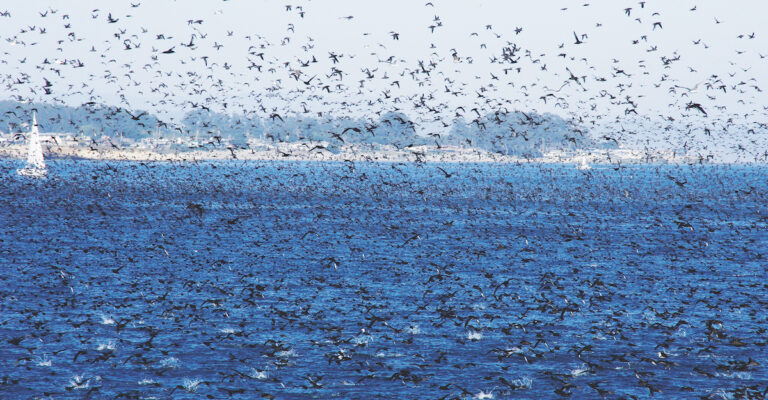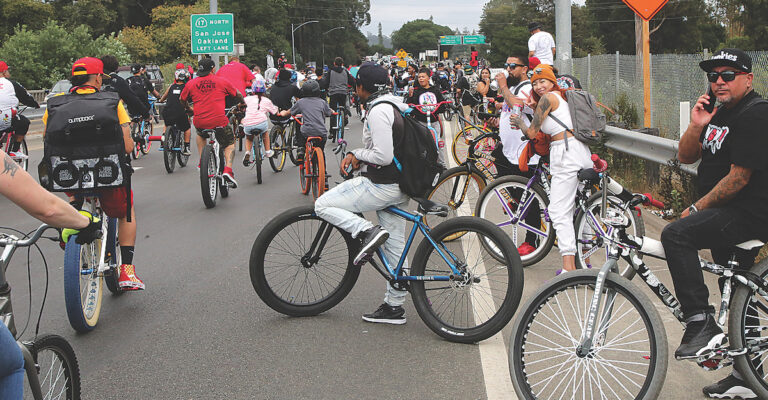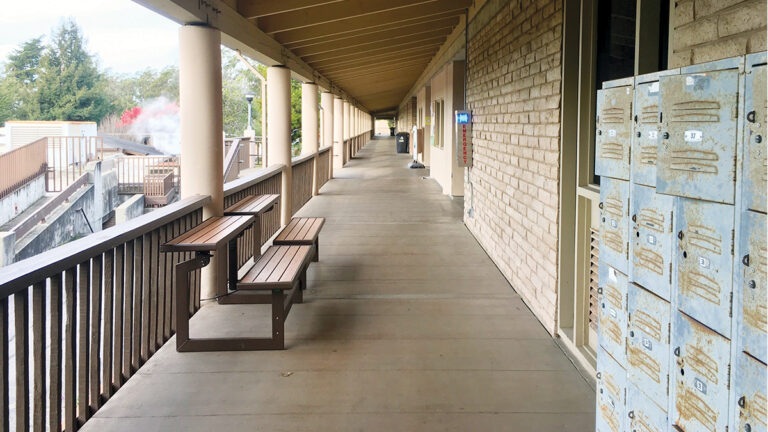A weekly guide to what’s happening.
ARTS AND MUSIC
AUGUST 2021 QUARANPALOOZA LIVESTREAM MUSIC FEST For those who don’t know, QuaranPalooza is a live music streaming extravaganza; eight hours of music spanning several genres and featuring performers from all over the country. For $15 you get access to live Zoom audio and video interaction/Q&As with performers between sets. The best part: The event helps support cancer patients and their families. For tickets and more information, visit bit.ly/quarantickets. Saturday, Aug. 28, Noon.
BANFF CENTRE MOUNTAIN FILM FESTIVAL VIRTUAL FESTIVAL Fluff up your couch cushions, grab a snack and connect to stellar outdoor adventures. This year, the Banff Centre Mountain Film Festival World Tour is virtual, so you will be able to travel to the most remote corners of the world, go on daring dive expeditions and celebrate remarkable outdoor achievements without having to leave your home. The monthly online film series features a mixed program of award winners from the 2018, 2019 and 2020 Banff Centre Mountain Film and Book Festivals. Additionally, the “Encore Classic Films” from the past 10 years—audience favorites—are available for purchase, individually, or as a bundle. Screenings go through Oct. 24. For more information, visit riotheatre.com or filmfest.banffcentre.ca. Rio Theatre, 1205 Soquel Ave., Santa Cruz.
MOTIV SUNDAY NIGHT FOR ‘SHEDM: THE FEMALE CREATORS OF DANCE MUSIC’ On Sundays, DJs mix the darkest BASS beats from some of the best female and LGBT producers around. Don’t miss out. Guest DJs every week. For more information, visit facebook.com/events/3008160246139834. Sunday, Aug. 29, 9pm. Motiv, 1209 Pacific Ave., Santa Cruz.
EL DUSTY AT MOE’S ALLEY Latin Grammy-nominated producer, DJ and Nu-Cumbia pioneer El Dusty performs at Moe’s. Tickets are $15-$20. Thursday, Aug. 26, 7:30pm. Moe’s Alley, 1535 Commercial Way, Santa Cruz.
SANTA CRUZ SHAKESPEARE: RII The story that sets England’s Wars of the Roses in motion, Jessica Kubzansky’s adaptation of Shakespeare’s Richard II tells the story of that king’s ill-fated reign using just three actors. What is our responsibility when a bad leader rightfully occupies the throne? This exploration of divine right, capricious leadership and bloody insurrection is packed with contemporary political relevance. L.A. Times critic Charles McNulty hailed the Los Angeles Boston Court Theatre debut as a “feat of ingenious stagecraft.” Santa Cruz Shakespeare performances take place in The Audrey Stanley Grove (The Grove) at Santa Cruz’s Upper DeLaveaga Park. Covid safety protocols include a revised seating layout, ensuring adequate space and comfort. For more information, visit santacruzshakespeare.org. Due to limited capacity at the venue, purchase tickets early. Thursday, Aug. 26, 7:30-9:30pm. Saturday, Aug. 28, 8-10pm. Sunday, Aug. 29, 1-3pm. The Grove at DeLaveaga Park, 501 Upper Park Road, Santa Cruz.
SANTA CRUZ SHAKESPEARE: THE AGITATORS This play tells the story of Frederick Douglass and Susan B. Anthony. Over 45 volatile years, they were friends, allies and adversaries. Their hopes and dreams for equality led to both common grounds and political battlefields. As agitators, they were not content to let either our nation or each other rest in complacency, and their respective fights for racial justice and gender equity continue to this day. For more information, visit santacruzshakespeare.org. Due to limited capacity, purchase tickets early. Wednesday, Aug. 25, 7:30pm. Friday, Aug. 27, 8pm. Saturday, Aug. 28, 2pm. Sunday, Aug. 29, 7pm. The Grove at DeLaveaga Park, 501 Upper Park Road, Santa Cruz.
T BONE MOJO BAND GREATER PURPOSE BREWERY COMPANY Enjoy good tunes and tasty brews while supporting your community. Longtime local faves Fuzzy Oxendine, Les “Blues Buddha” Rosenthal, T Bone Mojo (Toby Gray) and Rick Hoornbeck perform. A percentage of the profits will be donated to Santa Cruz charities and nonprofits. Thursday, Aug. 26, 6pm. East Cliff Brewing Co., 21517 E. Cliff Drive, Santa Cruz.
T BONE MOJO BAND AT OVER THE HILL GANG SALOON The Pleasure Point Dive Bar Dancing in the Streets party is where fun people meet! Fuzzy John Oxendine, Les “Blues Buddha” Rosenthal, T Bone Mojo and Rick Hoornbeck will provide the soundtrack. Saturday, Aug. 28, 7pm. Over The Hill Gang Saloon, 3530 Portola Drive, Santa Cruz.
THE EIGHTH ANNUAL SANTA CRUZ COMEDY FESTIVAL (OUTDOORS) The Santa Cruz Comedy Festival showcases a different nationally-known headliner each week with a new all-star line-up. Bring blankets and beach chairs, enjoy the array of vendors and food trucks and get ready to laugh! Saturday, Aug. 28, 4pm. Laurel Street Park, 301 Maple St., Santa Cruz.
COMMUNITY
ASK ME ANYTHING: CONVERSATIONS FROM THE FRONT LINE OF HOMELESSNESS Housing Matters’ programs staff’s newest webinar: “Ask Me Anything: Conversations from the Front Line of Homelessness,” is an opportunity to hear about what’s going on to help the homeless and ask questions. For more information, the Zoom link, visit eventbrite.com/e/ask-me-anything-conversations-from-the-front-line-of-homelessness-tickets-132987347737?aff=erelexpmlt. Tuesday, Aug. 31, 5pm.
COMPLEMENTARY TREATMENT FORUM The educational group, WomenCARE, is a safe place for women with cancer to learn. Meets every fourth Saturday on Zoom. Registration required. 831-457-2273. Saturday, Aug. 28, 10:30am-12:30pm. WomenCARE, 2901 Park Ave., Suite A1, Soquel.
FOOD TRUCK FRIDAY Food trucks, a beer and wine garden and live music from the Speakeasy Three sounds like ingredients for a good night. Killer comedy acts, courtesy of the Santa Cruz Comedy Festival, make a great night even better. Friday, Aug. 27, 5-8pm. Skypark, 361 Kings Village Road, Scotts Valley.
GREY BEARS BROWN BAG LINE Grey Bears are looking for help with their Brown Bag Production Line on Thursday and Friday mornings. Volunteers receive breakfast and a bag of food (if wanted). Masks required. For more information, visit greybears.org or call 831-479-1055. Thursday, Aug. 26, 7am. California Grey Bears, 2710 Chanticleer Ave., Santa Cruz.
PITCH YOUR STARTUP TO SANTA CRUZ INVESTORS AND EXPERTS ONLINE Do you have a startup or a strong idea for a startup? Do you need honest feedback from folks who know what they’re talking about? Pitch ideas to a panel of Santa Cruz startup investors and experts from the comfort of your home. If you don’t want to pitch, listen in on startup ideas and watch how experts analyze businesses. For more information, visit eventbrite.com/e/pitch-your-startup-idea-to-santa-cruz-investors-experts-online-tickets-162922847623. Wednesday, Aug. 25, 6pm.
SANTA CRUZ MAYOR’S ROUNDTABLE ON THE GREEN ECONOMY IN THE BUILT ENVIRONMENT The mayor will share the city’s progress on its green economy workforce development initiative and host local organizations and the community to discuss job prospects in energy and other climate supportive sectors. Register at us02web.zoom.us/webinar/register/WN_3vUII-FRTYatmhtLULdzgA. Wednesday, Aug. 25, 5pm.
GROUPS
COMMUNITY PILATES MAT CLASS Build strength! Please bring your own mat, a small Pilates ball and Theraband, if you have one. You must be vaccinated. $10 suggested donation. Thursday, Aug. 26, 10am. Tuesday, Aug. 31, 10am. Temple Beth El, 3055 Porter Gulch Road, Aptos.
ENTRE NOSOTRAS GRUPO DE APOYO Entre Nosotras support group for Spanish-speaking women diagnosed with cancer meets twice monthly. Registration required. Please call Entre Nosotras at 831-761-3973. Friday, Aug. 27, 6pm. WomenCARE, 2901 Park Ave., Suite A1, Soquel.
S+LAA MENS’ MEETING Having trouble with compulsive sexual or emotional behavior? Recovery is possible. The small 12-step group meets Saturday evenings. Enter through the front, go straight down the hallway to the last door on the right. Thursday, Aug. 26, 6pm. Sutter Maternity & Surgery Center, 2900 Chanticleer Ave., Santa Cruz.
WOMENCARE ARM-IN-ARM WomenCARE Arm-in-Arm Cancer support group for women with advanced, recurrent, or metastatic cancer meets every Monday at the WomenCARE’s office. Currently, the groups are held on Zoom. All services are free. Call WomenCARE at 831-457-2273 to register. For more information, visit womencaresantacruz.org. Monday, Aug. 30, 12:30pm. WomenCARE, 2901 Park Ave., Suite A1, Soquel.
WOMENCARE TUESDAY SUPPORT GROUP WomenCARE cancer support group for women newly diagnosed meets every Tuesday. Currently, the groups are held on Zoom. Call WomenCARE at 831-457-2273 to register. Tuesday, Aug. 31, 12:30-2pm. WomenCARE, 2901 Park Ave., Suite A1, Soquel.
WOMENCARE: LAUGHTER YOGA Laughter yoga for women with cancer meets every Wednesday on Zoom. Please call WomenCARE at 831-457-2273 to register. Wednesday, Aug. 25, 3:30-4:30pm. WomenCARE, 2901 Park Ave., Suite A1, Soquel.
OUTDOOR
BOTANICAL BEAUTIES OF SANTA CRUZ A selection of digital photographs of plants and blossoms shot throughout Santa Cruz County by Marlene Mirassou displayed at the Ugly Mug Coffeehouse. They are shown during regular business hours: 6:30am-3:30pm from Aug. 1 to Aug. 28. An artist reception will be held Saturday, Aug. 7, 4-7pm. Wednesday, Aug. 25 thru Saturday, Aug. 28, 6:30am-3:30pm. The Ugly Mug, 4640 Soquel Drive, Soquel.
CASFS FARMSTAND Organic vegetables, fruit, herbs and flowers are sold weekly at the CASFS Farmstand through Nov. 23. Proceeds support experiential education programs at the UCSC Center for Agroecology & Sustainable Food Systems. Friday, Aug. 27, Noon-6pm and Tuesday, Aug. 31, Noon-6pm. Cowell Ranch Historic Hay Barn, Ranch View Road, Santa Cruz.
COASTAL BIRDING WALK Be prepared to walk on uneven surfaces, and take many stops to view several birds, plants and scenery along the 2.5 mile hike. Help spot and identify birds along the way. Bring binoculars, if you have them, good walking shoes and clothes for variable weather. Meet next to the park map in the Wilder Ranch main parking lot. $10 for vehicle day-use. Pre-registration is recommended. Attendees are required to self-screen for Covid symptoms. Masks and social distancing are also required. For more information, call 831-426-0505. To register, visit: santacruzstateparks.as.me/schedule.php. Friday, Aug. 27, 9-11:30am. Wilder Ranch State Park, 1401 Coast Road, Santa Cruz.
HISTORIC RANCH GROUND TOUR Discover what life was like a century ago on this innovative dairy ranch. The hour-long tour includes the 1896 water-powered machine shop, barns and other historic buildings. $10 for vehicle day-use. Space is limited and early pre-registration is recommended. Attendees are required to self-screen for Covid symptoms when pre-registering. Masks and social distancing required during all programs. For more information, call 831-426-0505. To register, visit santacruzstateparks.as.me/schedule.php. Saturday, Aug. 28, 1pm. Sunday, Aug. 29, 1pm. Wilder Ranch State Park, 1401 Coast Road, Santa Cruz.
NATURAL BRIDGES LITTLE RANGERS Participants are invited to play games, listen to stories and songs and learn about nature. Activities and games vary week-to-week but always cover a topic relevant to Natural Bridges. Meet at the side porch of the visitor center. Parents or caregivers are required to stay and encouraged to help facilitate the fun and games. We can’t wait to see you again! $10 for vehicle day-use. For more information, call 831-423-0871. Masks and social distancing are required for all programs. Although pre-registration isn’t required, this program has a class capacity and operates on a first come, first serve basis, so make sure to arrive early. Monday, Aug. 30, 10-10:30am. Natural Bridges State Beach, Swanton Blvd. and West Cliff Drive, Santa Cruz.
NEW BRIGHTON JUNIOR RANGERS This fun one-hour program offers kids, ages 7-12, an opportunity to earn prizes while learning about birds, sea life, and local park animals, playing games, and doing arts and crafts. Meet at the campground Ramada. Spaces are limited, and early pre-registration is recommended. Attendees are required to self-screen for Covid symptoms when pre-registering. Masks and social distancing are required. For more information, call 831-685-6444. To register, visit santacruzstateparks.as.me/schedule.php. Friday, Aug. 27, 3pm. Saturday, Aug. 28, 3pm. New Brighton Beach, 1500 Park Ave., Capitola.
SANTA CRUZ PRIDE PICNIC XTRAVAGANZA It’s a family and pets-on-a-leash-friendly day filled with entertainment, art exhibits and pick-up games for all. Bring a yummy picnic basket and outdoor essentials for a relaxing day. Parking is limited. Interested in volunteering? For more information, visit santacruzpride.org. Sunday, Aug. 29, 11am-4pm. DeLaveaga Park, 855 Branciforte Drive, Santa Cruz.
SEYMOUR CENTER OUTDOORS Hone your observation skills and watch animals, such as sea stars, sea urchins and hermit crabs, gracefully move during tide pool investigating. Explore the pathway of giants and find nine outdoor objects hidden around the Seymour Center during an outdoor scavenger hunt. Why do baby fish look so different from adults? What kinds of strategies do fish use for raising their young? And what kind of fish live in Monterey Bay? Find the answers to these questions in five secret containers located throughout the Coastal Science Campus. Grab a selfie with one of our life-sized wooden marine animals at the Marine Animal Selfie Station. $10 suggested donation per household. Purchase a membership, and become a sustaining supporter of the Seymour Center. To learn more, visit seymourcenter.ucsc.edu/visit. Saturday, Aug. 28, 11am-2pm. Seymour Marine Discovery Center, 100 McAllister Way, Santa Cruz.
SUNSET BEACH BOWLS Experience tranquility, peace, and calmness as the ocean waves harmonize with the sound of crystal bowls raising vibration and energy levels. Every Tuesday, an hour before sunset at Moran Lake Beach. For more details, call 831-333-6736. Tuesday, Aug. 31, 7:15-8:15pm. Moran Lake Park & Beach, East Cliff Drive, Santa Cruz.
THE LEGACY IS IN THE SOIL: AN EVENING WITH CHEFARMER MATTHEW RAIFORD The UC Santa Cruz Center for Agroecology & Sustainable Food Systems (CASFS) and Bookshop Santa Cruz present a book talk and signing with CheFarmer Matthew Raiford, farmer, chef and graduate of the CASFS Apprenticeship in Ecological Horticulture. Raiford will discuss his new cookbook, Bress ‘n’ Nyam: Gullah Geechee Recipes. The book features a sixth-generation farmer, a collection of 100 heirloom recipes from the dynamic chef and a farmer working the lands of his great-great-great-grandfather in coastal Georgia. $45 includes an entry ticket and copy of Bress ‘n’ Nyam. Attendees must complete the Covid symptom questionnaire before coming to campus on the day of the event. Wednesday, Aug. 25, 7:30-9pm. UC Santa Cruz Hay Barn, Ranch View Road, Santa Cruz.
YOU PICK ROSES Get out of the house and enjoy cutting a bucket of deeply fragrant, lush and multi-colored roses to share with family and friends. Visit birdsongorchards.com for reservations and directions to the Watsonville farm. Once you purchase, you will receive a calendar link to select a time. Friday, Aug. 27, 11am. Sunday, Aug. 29, 11am.






























